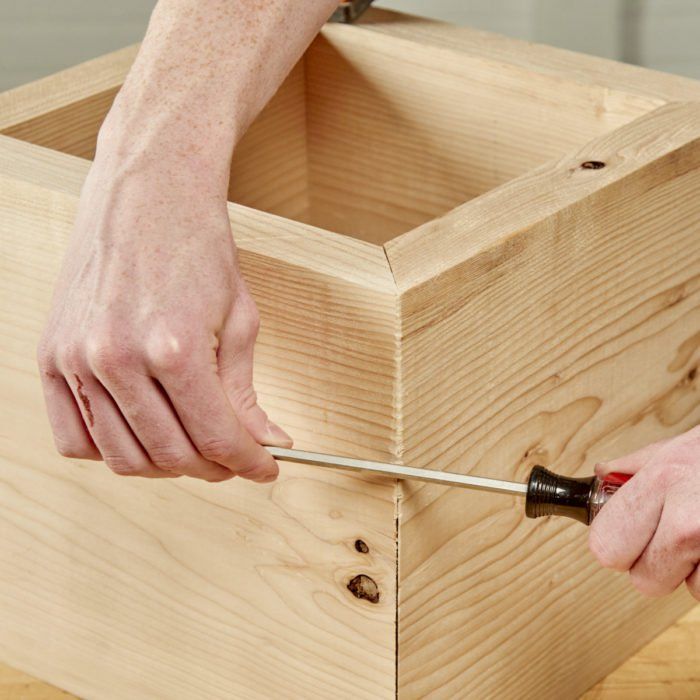Are you a woodworker concerned about the risk of fungal infections in your career? Woodworking involves working with various types of wood, which can harbor fungi that may pose health risks to workers. In this article, we will explore the potential dangers of woodworking in relation to fungus infections and provide information on how to protect yourself.
Woodworking is a skilled trade that involves crafting, shaping, and constructing objects from wood. However, the process of working with wood can also expose individuals to various types of fungi that naturally occur in wood. This raises the question: Can a woodworking career cause a fungus infection?
In this section, we will delve into the potential risks associated with woodworking and fungi, including the common types of fungi found in woodworking environments, health risks for woodworkers, symptoms and treatment of fungal infections related to woodworking, as well as real-life case studies. Additionally, we will discuss the importance of proper ventilation and personal protective equipment in preventing fungal infections among woodworkers.
If you are a woodworker or considering a career in woodworking, it is essential to be aware of these potential health hazards and take necessary precautions to safeguard your well-being.
What Is Woodworking and the Risk of Fungus Infections?
Woodworking is the skill of making items from wood and includes activities such as carving, joinery, and cabinetry. While woodworking can be a rewarding and fulfilling career, it also comes with certain health risks. One of the risks that woodworkers face is the potential for contracting fungus infections due to prolonged exposure to certain types of fungi found in wood.
Understanding the Risk of Fungus Infections
Woodworking involves working with various types of wood, some of which may contain fungi that can cause infections. Fungi thrive in damp and humid environments, which are commonly found in woodworking workshops where wood is stored for long periods. As a result, woodworkers are at risk of inhaling spores released by these fungi during their work, leading to potential respiratory and skin infections.
Identifying High-Risk Woodworking Environments
Certain woodworking environments pose a higher risk for fungus infections than others. For example, workshops with poor ventilation and high levels of humidity create ideal conditions for fungi to grow. Additionally, working with specific types of wood that are more prone to fungal infestations, such as pine or cedar, increases the likelihood of exposure to harmful fungi. It’s important for woodworkers to be aware of these high-risk environments and take proactive measures to reduce their risk of infection.
Overall, understanding the nature of woodworking and the potential risks associated with fungus infections is crucial for woodworkers to maintain a safe and healthy work environment. By being knowledgeable about the common types of fungi found in woodworking environments and the health risks they pose, woodworkers
Common Types of Fungi Found in Woodworking Environments
When working with wood, it is important to be aware of the potential risks posed by the presence of fungi in woodworking environments. Fungi can thrive in the organic matter of wood and create a suitable environment for their growth. Understanding the common types of fungi found in woodworking environments is crucial for woodworkers to protect themselves from potential infections.
Types of Fungi
One common type of fungus found in woodworking environments is Aspergillus. This type of fungus can produce spores that are easily released into the air, especially when working with dry and dusty wood. Another common type is Penicillium, which can also be found in wood and can cause health issues if inhaled over a prolonged period.
Risk Factors
Woodworking environments provide favorable conditions for fungal growth due to factors such as high humidity, poor ventilation, and accumulation of dust and debris. Additionally, certain types of wood can harbor specific fungi known to cause health issues, such as oak being associated with the presence of Histoplasma capsulatum.
Preventive Measures
To minimize the risk of exposure to these fungi, woodworkers should implement preventive measures such as maintaining proper ventilation in workspaces, using personal protective equipment (PPE) including dust masks and gloves, and keeping work areas clean and free from debris. It is also important to store and handle wood materials properly to prevent fungal growth.
By being aware of these common types of fungi found in woodworking environments and taking proactive measures to reduce exposure, woodworkers can protect themselves from potential fungus infections related to their career.
Health Risks for Woodworkers and How to Prevent Fungus Infections
As a woodworker, there are potential health risks that you should be aware of, including the risk of developing a fungus infection. The nature of woodworking involves working with various types of wood, some of which can harbor fungi that can potentially cause infections. Exposure to these fungi from the wood and the environment in which woodworking takes place can lead to a range of health issues if proper precautions are not taken.
Woodworking activities such as sawing, sanding, and drilling can release fungal spores into the air, putting woodworkers at risk of inhaling these potentially harmful particles. This can lead to respiratory issues and possible fungal infections in the lungs. In addition, prolonged exposure to damp or moist conditions in a woodworking environment can create an ideal breeding ground for fungi to thrive.
Some common types of fungi found in woodworking environments include Aspergillus, Penicillium, and Trichoderma. These fungi can cause a range of health problems, from respiratory issues to skin infections. It’s important for woodworkers to understand the potential risks associated with these fungi and take proactive measures to prevent exposure and infection.
It is essential for woodworkers to prioritize their health and safety by taking preventive measures against fungus infections. Proper ventilation in the woodworking area is crucial in minimizing the buildup of airborne particles such as fungal spores. Additionally, wearing appropriate personal protective equipment (PPE) such as respirators, goggles, and gloves can help reduce the risk of exposure to potentially harmful fungi. Regular cleaning and maintenance of tools and workspaces are also important steps in preventing fungal contamination in woodworking environments.
| Types of Fungi | Potential Health Issues |
|---|---|
| Aspergillus | Respiratory issues |
| Penicillium | Skin infections |
| Trichoderma | Respiratory problems and allergies |
Symptoms and Treatment of Fungus Infections Related to Woodworking
Woodworking is a craft that involves working with various types of wood, and while it can be a rewarding career, it also comes with certain health risks. One of the potential risks for woodworkers is the possibility of developing a fungus infection due to exposure to certain types of fungi commonly found in woodworking environments.
Some common symptoms of fungus infections related to woodworking include irritation of the skin, redness, itching, and rashes. In more severe cases, woodworkers may experience respiratory issues such as coughing, wheezing, and shortness of breath. It’s important for woodworkers to be aware of these symptoms and seek medical attention if they believe they may have developed a fungus infection.
Treatment for fungus infections related to woodworking may vary depending on the severity and type of infection. In some cases, over-the-counter antifungal creams or ointments can help alleviate symptoms. For more serious infections, oral antifungal medications may be necessary. It’s always best for woodworkers to consult with a healthcare professional for proper diagnosis and treatment.
To prevent fungus infections related to woodworking, woodworkers should prioritize proper ventilation in their workspaces. Using dust collection systems and wearing appropriate personal protective equipment such as masks and gloves can significantly reduce the risk of inhaling or coming into contact with harmful fungi. Additionally, practicing good hygiene by washing hands after working with wood can also help prevent fungal infections.
- Keep work areas clean and free from excessive sawdust
- Invest in quality personal protective equipment such as respirators and gloves
- Seek medical attention if you suspect you have developed a fungus infection
Case Studies
Woodworking is a rewarding and fulfilling career, but it also comes with its health risks. One question that frequently arises is whether a woodworking career can lead to a fungus infection. The answer to this question is yes, woodworking environments can harbor various types of fungi that have the potential to cause infections in woodworkers.
One common example of a fungus that can affect woodworkers is Aspergillus. Aspergillus is a mold commonly found in decaying vegetation, compost piles, and stored grain. In woodworking environments, Aspergillus can grow on wood and release spores into the air when the wood is being cut, sanded or processed. When inhaled, these spores can cause health issues such as allergic reactions or respiratory infections.
In addition to Aspergillus, there are other types of fungi that woodworkers may come into contact with, such as Penicillium and Cladosporium. It’s essential for individuals working in woodworking environments to be aware of these potential hazards and take proactive measures to prevent exposure and reduce the risk of developing fungal infections.
| Fungus Type | Health Issues |
|---|---|
| Aspergillus | Allergic reactions or respiratory infections |
| Penicillium | Eye and skin irritation |
| Cladosporium | Asthma symptoms and respiratory issues |
Understanding the Importance of Proper Ventilation and Personal Protective Equipment in Woodworking
Woodworking environments can be breeding grounds for various types of fungi, which can pose a risk to the health of woodworkers. Proper ventilation and the use of personal protective equipment (PPE) are crucial in minimizing the risk of fungus infections in woodworking. Without these measures in place, woodworkers may be exposed to harmful fungal spores that can cause respiratory issues and skin infections.
It is essential for woodworking facilities to have adequate ventilation systems that effectively remove airborne dust and fungal spores from the air. This will help reduce the concentration of potentially harmful particles in the work environment. Additionally, woodworkers should always wear appropriate PPE, such as respirators, goggles, gloves, and long-sleeved clothing to reduce direct contact with wood dust and fungi.
Ways to Improve Ventilation and Use PPE in Woodworking
- Install exhaust fans and air filtration systems to remove airborne contaminants.
- Use proper dust collection systems on woodworking machinery to minimize airborne wood particles.
- Always wear NIOSH-approved respirators when working with untreated or moldy wood.
- Wear gloves and long-sleeved clothing to protect skin from direct contact with wood dust.
Proper ventilation and the consistent use of PPE are critical in reducing the risk of developing fungus infections related to woodworking. By implementing these measures, woodworkers can significantly lower their chances of encountering health issues caused by exposure to fungi in their work environment. It is important for both employers and employees in the woodworking industry to prioritize safety protocols that address these concerns.
Conclusion
In conclusion, it is evident that a woodworking career can pose a risk of fungus infections for woodworkers. The nature of woodworking involves exposure to various types of fungi commonly found in wood and sawdust, which can potentially lead to health issues if proper precautions are not taken. However, by understanding the risks and implementing preventive measures, woodworkers can maintain a healthy work environment and reduce the likelihood of contracting fungus infections.
One of the key factors in preventing fungus infections in woodworking environments is ensuring proper ventilation and utilizing personal protective equipment. Effective ventilation helps to reduce the concentration of airborne fungal spores, while wearing masks and gloves can provide a physical barrier against direct contact with hazardous fungi. Additionally, maintaining cleanliness in the workspace and promptly cleaning up any wood dust accumulation can also contribute to minimizing the risk of fungal exposure.
It is essential for woodworkers to be proactive in monitoring their health and recognizing any potential symptoms of fungus infections early on. By staying informed about the common types of fungi found in woodworking environments and being vigilant about practicing good hygiene, woodworkers can significantly reduce their susceptibility to fungal-related health issues. Ultimately, prioritizing safety measures and maintaining a clean and well-ventilated workspace is crucial for woodworkers to continue pursuing their craft without compromising their health.
Frequently Asked Questions
What Are the Hazards of Woodworking?
The hazards of woodworking can include the risk of cuts, splinters, and puncture wounds from sharp tools or machinery. Inhaling wood dust can also lead to respiratory issues, and exposure to certain chemicals used in woodworking can have harmful health effects.
Is Wood Fungus Harmful to Humans?
Wood fungus can be harmful to humans if it produces mycotoxins, which are toxic substances that can cause health problems when ingested or inhaled. Additionally, some people may be allergic to certain types of wood fungi, leading to respiratory issues or skin irritation.
What Fungi Grow on Wood?
Various types of fungi can grow on wood, including mold, mildew, and rot-causing fungi like white rot and brown rot. Some species of wood fungi are known for causing structural damage to wooden materials, while others may produce discoloration or odors without necessarily posing a direct health risk to humans.

Hi everyone! I’m a woodworker and blogger, and this is my woodworking blog. In my blog, I share tips and tricks for woodworkers of all skill levels, as well as project ideas that you can try yourself.





